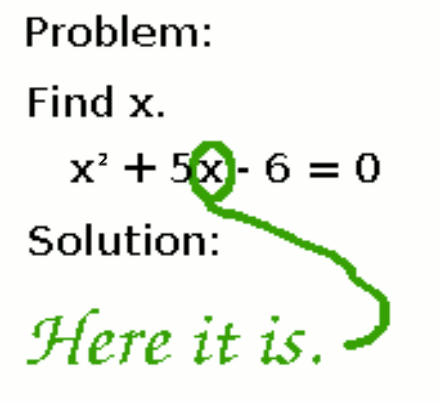To start off with, I'm sure most of you are familiar with F=ma... Force is equal to the amount of mass you've got, multiplied by the amount you need that mass to accelerate.
Ok, now, each one of those variables is a vector in space (a set of three numbers that tells you the position, velocity, force, or acceleration you are dealing with relative to whatever point of reference; like drawing an arrow from whatever your origin is, say 0,0,0 to whatever your vector value is, x,y,z). Vectors represent both the size and direction of... whatever.
Sigma F on the far left means the summation of forces acting ON an object. In this case, we'll use a bucket of gasoline.
Now say you throw that bucket of gas up in the air with that force F, and you want to figure out what that's going to look like mathematically. The ground, where you are standing, becomes the inertial (non-moving, observer's) reference frame. That frame has its own XYZ coordinate axes. The bucket itself also gets *its* own set of coordinate axes (the relative frame of reference).
The Arel term is the various accelerations going on inside the bucket axes...
d2R/dt2 is the acceleration of the bucket's axes away from the observer's reference frame (like if your bucket had rockets, or was subject to that pesky gravity thing).
The cross product...
http://en.wikipedia.org/wiki/Cross_product (which is what each of the X symbols represent) of d.omega/dt and r is the effect of any angular acceleration going on (say, if the rockets are making the bucket spin faster and faster).
The cross product of 2.omega and r is the forces of acceleration the bucket would feel from the gasoline sloshing around. (Coriolis acceleration).
Omega x (omega x r) is the centripetal acceleration, the vector for which is directed from the bit of gas you are concerned with, straight to the axis that the rockets are making the bucket spin on.
Now you take that whole Arel term and stick it up in the integral, and do the integral times the change in mass of the bucket for F=ma (in case your bucket is leaking, or it's raining outside, and you need a really precise equation for the forces effecting your bucket toss, it's really important to do an integral and not just multiply by an average amount of mass, or you might light the wrong neighbor's house on fire).
The total force acting on your rocket bucket full of gas is the summation of the forces of your toss, minus the integral of all that other crap that may be adding or subtracting to the overall forces acting on your bucket at any given point in time.
Now on the RIGHT side of the equation, things get a little more weird. On the right side, we've got non-Newtonian physics going on. F=ma doesn't exactly apply, and the forces acting on the bucket are called "fictitious forces." I am not well educated enough to be able to explain it at the moment, but in a short enough time I will be. The gist of it is that we are now dealing with momentum exerting a force of a kind, instead of... well... force.
In the meantime, if anybody wants to make their brain hurt, go look it up here:
http://en.wikipedia.org/wiki/Fictitious_forces
But discounting that glaring hole in my knowledge, here is what the right side of the equation is telling you:
Working from the inside out of the first term, the V times Ro means the velocity of the gas (relative to the observer) that's flowing out of the bucket times the density of that gas, integrated over the change in volume of your bucket itself (so let's say that this is a floppy bucket, and it's not really up to the effort of being tossed; it deforms and the volume gets smaller, and some gas sloshes out because of that).
The d/dt part around that is the rate of change of the deformation of your bucket with respect to time.
Since we've got density times volume times a velocity all going on in that term, that means we are dealing with a momentum. (Density times volume is mass. Mass times velocity is momentum).
Pulling that term all together, you've got the momentum force associated with the change in mass flowing out of your bucket as it changes its volume with respect to time.
Now the last term...
V times Ro again is the velocity of the gas flow out of the bucket, relative to the observer, times the density of your gas.
Multiply that times the dot product of Vr*n
(
http://en.wikipedia.org/wiki/Dot_product ) which is the velocity of the gas relative to the *bucket* times the vector arrow that points directly away from the top surface of your bucket (or directly away from the imaginary plane through which the gas flows)
When your bucket deforms, and the gas sloshes out, the deformation also causes a change in the area through which the gas flows. Your nice, perfect, circular bucket is now an ovoid, and that ovoid doesn't have the same area as the circle that it was a minute ago. That's what the dA means at the end of the term.
This is important, because velocity, times density, times area, is the amount of gas you just poured out of your bucket (or amount of anything that just passed through anything, for that matter).
So you take the integral of V*ro(Vr*n)dA and THAT is the momentum force caused by the gas that has flowed out of your bucket.
Add those two terms together, and tickety-boo, they add up to be the sum total of the forces acting on the system.
Still with me?
I know that maybe two of you bothered reading this far.
Congratulations on being a complete and total fucking nerd.
Needless to say, you can take the whole equation apart to figure out whatever position, velocity, acceleration, or force you need to as your soon to be exploding bucket of rocket propelled gasoline sails swiftly and expediently towards your white trash neighbor's meth lab.
The end.
Oh, and for you total fucking nerds that made it this far, you also probably already know about a lot of this shit.
Y'all just go ahead and correct me if you can.
Please.
I've gotta make sure I'm right so I don't frakking fail this class.




